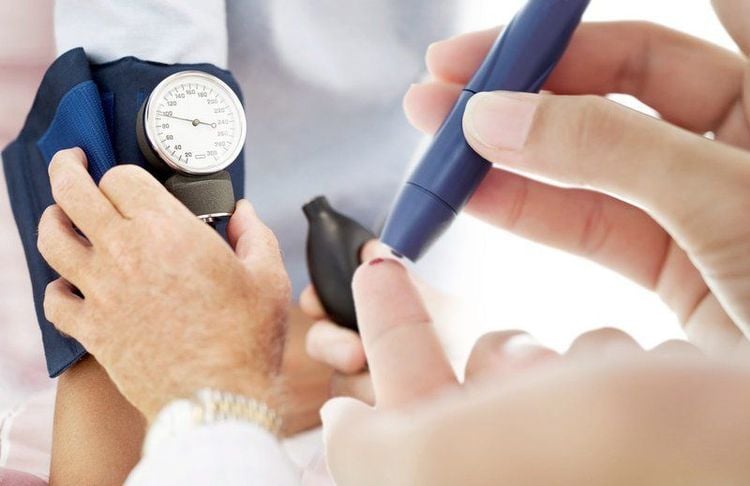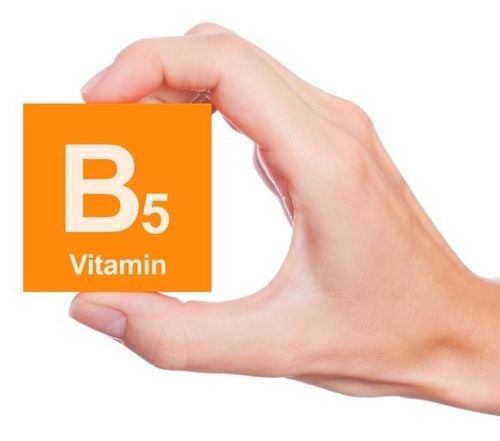This is an automatically translated article.
Carbohydrates are one of the indispensable nutrients in the daily diet. When consuming foods containing carbohydrates, the body's digestive system breaks them down into easily digestible sugars and then enters the bloodstream. The pancreas is responsible for regulating this sugar level. If the regulation is faulty, there is a risk of developing diseases such as type 2 diabetes,...1. The relationship between carbohydrates and blood sugar
When people eat foods containing carbohydrates, the digestive system breaks down digestible things into sugars and enters the bloodstream. When blood sugar levels rise, the pancreas produces insulin, a hormone that prompts cells to absorb blood sugar for energy or storage. The cells absorb the sugar in the blood, the level in the blood begins to drop.
During this process, the pancreas begins to make glucagon which is the hormone that signals the liver to start releasing stored sugar. This interaction between insulin and glucagon ensures that the cells of the entire body, and especially the cells in the brain, have a steady supply of blood sugar.
Carbohydrate metabolism is important in the development of type 2 diabetes. This disease occurs when the body cannot make enough insulin or cannot properly use the insulin it makes.
Type 2 diabetes usually develops gradually over a number of years, starting when muscles and other cells stop responding to insulin. This condition, known as insulin resistance, causes blood sugar and insulin levels to stay high after eating. Over time, the heavy demand placed on the insulin-producing cells wears them down, and insulin production eventually stops.

Carbohydrate nạp vào cơ thể nhiều sẽ làm tăng lượng đường trong máu
2. Glycemic Index
Previously, carbohydrates were often classified as simple or complex and described as follows:
Simple carbohydrates These carbohydrates include sugars such as fructose and glucose and have a simple chemical structure consisting of only one monosaccharide sugar or two disaccharides. The body can easily and quickly use simple carbohydrates for energy because of their simple chemical structure, which often leads to a faster rise in blood sugar and insulin secretion from the pancreas. may cause negative health effects.
Complex Carbohydrates These carbohydrates have a more complex chemical structure, with three or more sugars linked together called oligosaccharides and polysaccharides. Many complex carbohydrate foods contain fiber, vitamins, and minerals, and they take longer to digest, which means they have less immediate impact on blood sugar, causing it to rise more slowly. But with other foods that are considered complex carbohydrates such as: white bread and white potatoes, the nutritional composition contains mainly starch and is low in fiber or other beneficial nutrients.
However, the division of carbohydrates into simple and complex does not take into account the effects of carbohydrates on blood sugar and chronic diseases. To explain how carbohydrate-rich foods directly affect blood sugar levels, the glycemic index has been developed and is considered a better way to classify carbohydrates, especially starchy foods.
The glycemic index classifies carbohydrates on a scale of 0 to 100 based on how quickly and how much they raise blood sugar levels after eating. Foods with a high glycemic index, like white bread, are digested quickly and cause significant fluctuations in blood sugar. Foods with a low glycemic index, like whole-grain oats, are digested more slowly, causing blood sugar to rise gradually.
Low glycemic index foods with ratings of 55 or less and foods rated 70-100 are considered high glycemic index foods. Moderate foods have a glycemic index of 56-69.

. Chỉ số đường huyết phân loại carbohydrate theo thang điểm từ 0 đến 100
Eating a lot of foods with a high glycemic index - which causes blood sugar to spike - can lead to an increased risk of type 2 diabetes, heart disease, and being overweight, . There is also preliminary research that finds an association between a high-glycemic diet and macular degeneration is influenced by factors such as age, ovulatory infertility, and cancer. colorectal mail. In contrast, with the results of several studies on foods with a low glycemic index, foods have been shown to help control type 2 diabetes and improve weight loss.
A 2014 review of studies investigating carbohydrate quality and chronic disease risk found that a low glycemic index diet may offer anti-inflammatory benefits.
The University of Sydney Australia has maintained a searchable database of foods and their respective glycemic index.
3. Factors that can affect the glycemic index
Processed foods: Cereals that have been milled and refined with the bran and germ removed have a higher glycemic index than minimally processed whole grains. Physical form: Finely ground grain is digested faster than coarse grain. This is why eating whole grains in their whole grain form like brown rice or oats can be healthier than eating processed whole grain bread. Fiber content: High-fiber foods don't contain a lot of digestible carbohydrates, so it slows down the rate of digestion and causes blood sugar to rise gradually and lower. Ripeness: Ripe fruits and vegetables tend to have a higher glycemic index than unripe fruit. Fat and acid content of foods: Fatty or acidic meals are converted more slowly to sugar. Many epidemiological studies have shown a positive association between a higher dietary glycemic index and an increased risk of type 2 diabetes, heart disease, and coronary artery disease. However, the relationship between glycemic index and body weight has been poorly studied and is still controversial.

Ngũ cốc nguyên hạt được khuyến khích sử dụng cho bệnh nhân tiểu đường
4. Glycemic level
The glycemic index of a food does not tell us how many digestible carbohydrates it contains, and the total amount of carbohydrates does not include the fiber it provides. This is why researchers have developed associations to classify foods that take into account the amount of carbohydrate in the food in relation to its effects on blood sugar. This measurement is called the glycemic index. The glycemic index of a food is determined by multiplying its glycemic index by the amount of carbohydrates in that food. In general, a blood sugar level of 20 or higher is high, 11 to 19 is moderate, and 10 or less is low.
The glycemic index has been used to study whether a high glycemic load diet is associated with an increased risk of type 2 diabetes and heart disease-related events. In a large meta-analysis of 24 prospective cohort studies, researchers concluded that people who consumed a lower glycemic diet had a lower risk of type 2 diabetes compared with those who consumed a lower glycemic load. people who eat a food diet with higher blood sugar. A meta-analytical study conducted with similar results concluded that a higher-glycemic diet is also associated with an increased risk of heart disease and coronary artery disease.

Bệnh viện Đa khoa Quốc tế Vinmec có gói sàng lọc đái tháo đường, rối loạn mỡ máu cho khách hàng
To protect the health of everyone, every family, Vinmec International General Hospital always deploys a screening package for diabetes and dyslipidemia to determine blood sugar levels, helping to detect pre-diabetes early. diabetes, accurately classifying diabetes type, developing a nutritional regimen, monitoring to minimize the risks and complications caused by diabetes.
Using the screening package for diabetes and dyslipidemia at Vinmec, patients will receive:
Endocrine CK examination (with appointment) Total urinalysis (by automatic machine) Quantitative Glucose Quantitative HbA1c Quantitative Uric Acid Quantification of Cholesterol Determination of HDL-C (High density lipoprotein Cholesterol) Determination of LDL-C (Low density lipoprotein Cholesterol) Determination of Triglycerides Determination of Urea Determination of Creatinine Measurement of AST Activity (GOT) Measurement of ALT Activity (GPT) Measurement of GGT activity (Gama glutamyl Transferase) Quantification of MAU (Micro Albumin Arine) Echocardiography, transthoracic pericardium, Normal ECG, Carotid Doppler ultrasound, Transcranial Doppler (carotid) Arterial Doppler ultrasound, veins of the lower extremities (bilateral lower extremity arteries)
Please dial HOTLINE for more information or register for an appointment HERE. Download MyVinmec app to make appointments faster and to manage your bookings easily.
Reference source: hsph.harvard.edu













